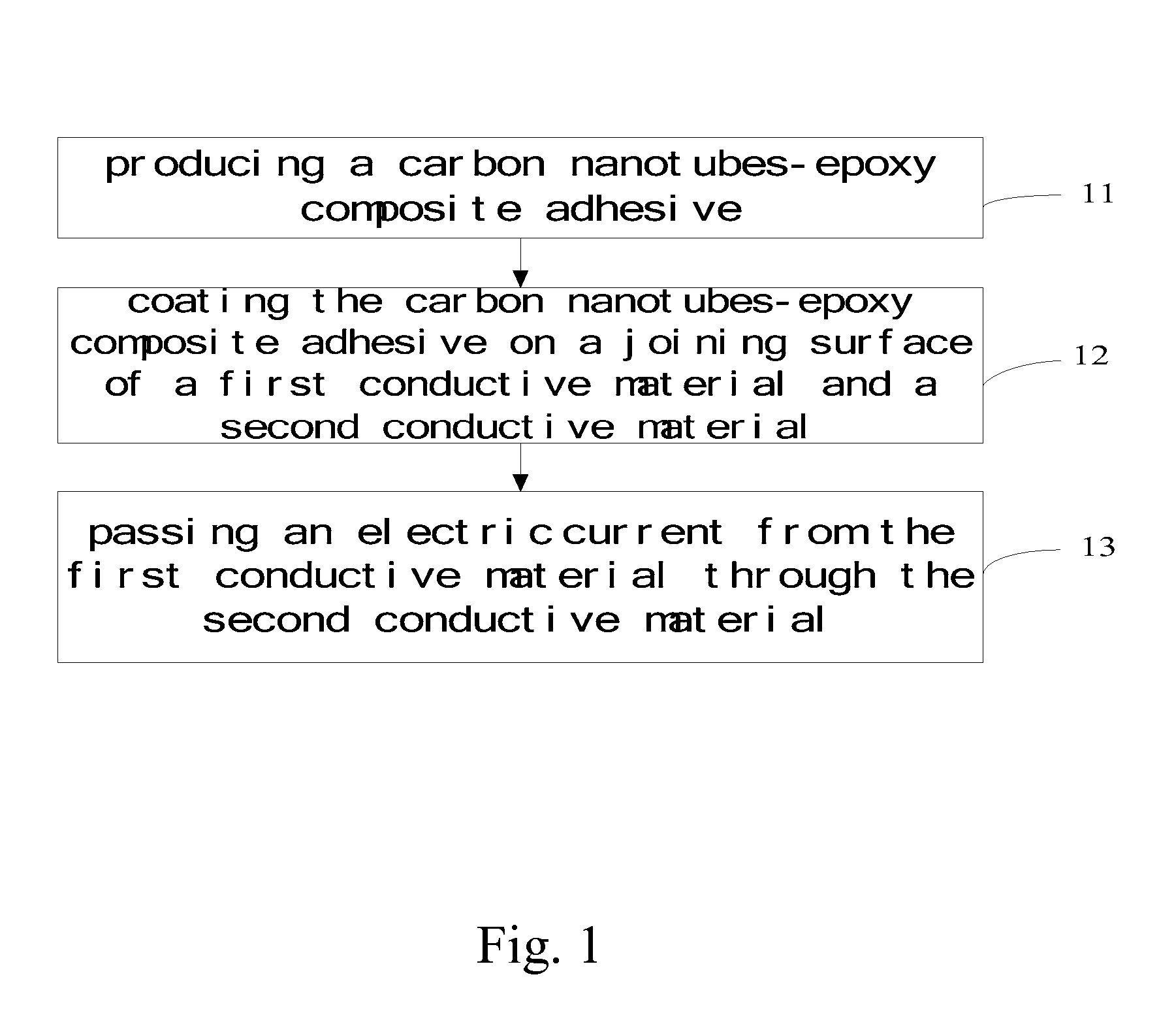Method for bonding conductive material
a technology of conductive materials and conductive resins, applied in the direction of adhesive types, layered products, chemistry apparatus and processes, etc., can solve the problems of reducing the hardening time, wasting a lot of heat energy, weakening the bond strength, etc., and achieves time and energy saving, easy equipment, and hardening the effect of epoxy resin
- Summary
- Abstract
- Description
- Claims
- Application Information
AI Technical Summary
Benefits of technology
Problems solved by technology
Method used
Image
Examples
Embodiment Construction
[0021]The technical characteristics and operation processes of the present invention will become apparent with the detailed description of preferred embodiments and the illustration of related drawings as follows.
[0022]Please refer to FIG. 1, which is a production flow chart showing one embodiment of the present invention. First of all, producing a carbon nanotubes-epoxy composite adhesive 11, and the composite adhesive is a high-temperature solidification type epoxy resin with hardener added. In this embodiment, the content of carbon nanotubes occupies a percentage by weight of 0.5˜6 wt % of the total weight of the carbon nanotubes-epoxy composite adhesive, allowing the composite adhesive to be conductive, then coating the joining surface of a first conductive material and a second conductive material 12 with the carbon nanotubes-epoxy composite adhesive, thereafter, passing an electric current from the first conductive material through the carbon nanotubes-epoxy composite adhesive...
PUM
| Property | Measurement | Unit |
|---|---|---|
| diameter | aaaaa | aaaaa |
| conductive | aaaaa | aaaaa |
| electric current | aaaaa | aaaaa |
Abstract
Description
Claims
Application Information
 Login to View More
Login to View More - R&D
- Intellectual Property
- Life Sciences
- Materials
- Tech Scout
- Unparalleled Data Quality
- Higher Quality Content
- 60% Fewer Hallucinations
Browse by: Latest US Patents, China's latest patents, Technical Efficacy Thesaurus, Application Domain, Technology Topic, Popular Technical Reports.
© 2025 PatSnap. All rights reserved.Legal|Privacy policy|Modern Slavery Act Transparency Statement|Sitemap|About US| Contact US: help@patsnap.com



